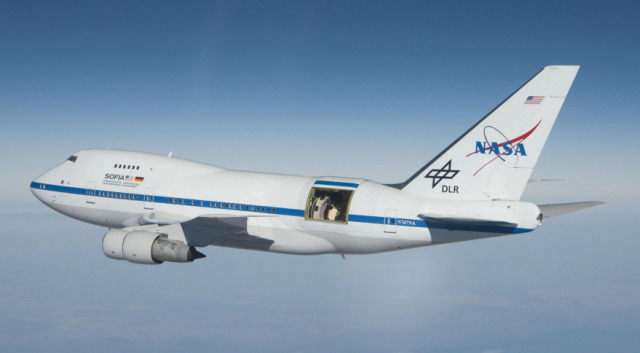The NASA federal budget plan for fiscal year 2023 does not provide for the further continuation of the SOFIA flying stratospheric observatory and the closure of the project in 2023. Such a decision was made due to the high cost of the annual maintenance of the project and the insufficient level of scientific productivity, it is reported on the website Space.com .
SOFIA (Stratospheric Observatory for Infrared Astronomy) is a joint project launched in 2010 by NASA and the German Center for Aviation and Astronautics. The observatory is a 2.5-meter reflecting telescope equipped with seven scientific instruments and mounted in the rear of a modified Boeing 747SP aircraft. Due to the fact that the aircraft flies at altitudes of 12-14 kilometers in the stratosphere of the Earth, it becomes possible to conduct observations in most of the infrared wave range, which is little accessible to ground-based telescopes due to the absorption of radiation by water vapor in the lower layers of the Earth's atmosphere.
SOFIA's range of scientific tasks is quite extensive — the observatory conducts observations of star formation regions and the interstellar medium of the Milky Way, Solar System objects, exoplanets, supernova remnants and centers of other galaxies containing black holes. In particular, SOFIA found water molecules in a crater on the visible side of the moon and proved the presence of molecular HeH+ ions, which were the first molecules in the universe, in outer space.
In 2019, an independent NASA commission concluded that the observatory, whose work costs $ 85 million a year, for the first 5 years of operation provided material for an average of 21 scientific articles per year, which makes it one of the least productive telescopes in the world. In February 2020, the administration of Donald Trump proposed to close the project due to its inefficiency, but this did not happen. However, in November last year, a new Ten—Year NASA astrophysical review was published, which recommended curtailing the program as early as 2023 - the observatory did not show an increase in the efficiency of its work to a level commensurate with its cost. This decision was criticized by the project team, which was against the completion of the work.
On March 28, 2022, the White House presented the NASA budget plan for fiscal year 2023. There are no plans to allocate funds for the continuation of SOFIA's work, but funding is proposed for the orderly closure of the project next year in accordance with the recommendations of the scientific community. It is noted that the annual budget of the project is the second largest among astrophysical programs, but scientific productivity is incommensurable with other major scientific missions.
Earlier we talked about how SOFIA looked inside the stellar cradle and connected the alignment of cosmic dust particles with the radiation absorbed by them.
Alexander Voityuk

